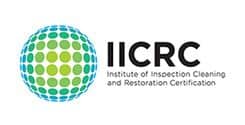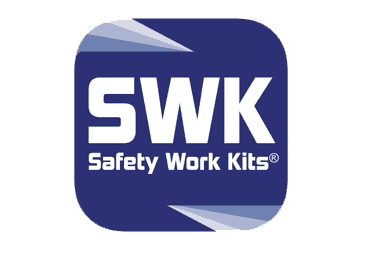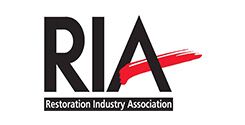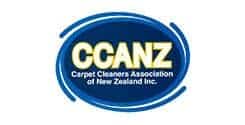Flood damage can be a serious issue for properties in Auckland. CleaningPro Auckland offers professional flood restoration to help bring your carpet and home back to life after water damage.
CleaningPro provides flood restoration services in Auckland using advanced structural drying techniques to quickly and efficiently restore the flooded house and dry wet carpet. Our technicians visit and inspect the water damage restoration site every 24-48 hours.
A lot of homeowners in Auckland have problems with water damage. It can happen when pipes burst in older homes or when spouting leaks during a stormy southerly. Water damage can have a big effect on your home and your peace of mind, whether it's a sudden downpour that floods a basement in West Auckland or a slow leak that quietly damages the gib in a Ponsonby bungalow.
Water can get into every nook and cranny, soaking walls and making the air damp and unhealthy. In Auckland's humid climate, mould can start to grow in as little as 36 hours. Walls get stained, carpets get soaked with water—sometimes beyond repair—and mould can start to grow. This not only makes it harder to clean up, but it also puts your health at risk.
Not all restoration companies take the right approach. Some focus on getting the job done quickly rather than thoroughly, which can lead to more damage and extra costs in the long run. They may tear out carpets and walls unnecessarily or fail to properly dry your home, leaving moisture behind and increasing the risk of future mould problems. That’s why it’s essential to choose a company like Cleaning Pro, which prioritises careful drying and detailed restoration to protect your home and your family’s well-being.
The water damage clean-up process starts with an exhaustive inspection of the property in question. It involves a thorough inspection of ceilings, walls, and floors.
Only a professional can truly assess the flood damage caused to your property. The inspection determines the volume of water damage. By sorting and categorizing the damage caused by water, we can create a plan to fix it effectively.
Class 1: This damage is caused by the minimum absorption of water and moisture involving some part of a room. (In technical terms, the flood affects less than 5% of the total building.)
Class 2: This damage involves moisture-affected walls and complete carpeting of a full room (5-40% water damage to the building).
Class 3: This damage is one of the worst flood scenarios. The moisture soaks almost the entire building. In class 3 damage, the flooding affects the ceilings badly, impacting over 40% of the building.
Class 4: This damage classification is a special category. It is important to use special drying tools and methods. This is necessary for surfaces like stone, hardwood, and concrete that have water damage.
Category 1: This includes water damage from clean water sources. Broken or leaking water pipes and faulty flush tanks serve as examples. It is important to remember that category 1 water damage can worsen. It can turn into category 2 or category 3 damage if not fixed quickly.
Category 2: This type of damage is more serious. It is caused by detergent from grey water. This can come from a dishwasher or spills from a washing machine. Contaminated water from toilet leakages also falls into this category.
Category 3: This is the most serious type of water damage. It involves dangerous chemicals and can cause diseases. People also call this black water flooding. Sewage, natural floods, and other types of stagnant water with dangerous microorganisms cause this kind of damage.
We prepare water removal plans using our powerful vacuums and extraction pumps. The nature and type of equipment applied depends on the damage caused by water. Our top priority is to remove water to stop the possible growth of bacteria and mould.
After removing the damaging water from your property, the next step is to dehumidify. This will help dry out any remaining moisture. This is critical for restoration to be effective since moisture can result in the aggressive growth of rot and mould.
The drying process can take a number of days to accomplish, depending on the nature and extent of water damage. It also involves wet carpet drying.
Household items are the most delicate and easily affected by water damage. We take great care to thoroughly cleanse all household items and personal belongings. This cleaning is necessary to stop bacteria and mould from growing.
As a standard measure, we treat all affected personal clothing, drapery, and carpeting with antimicrobial chemicals for total decontamination. We use air scrubbers to eliminate dust and moisture in the air, which improves the building's air quality.
The final and most critical step in flood restoration is the restoration itself. This process requires the replacement of drywall and insulation materials. When the damage isn't too severe, the repair process might just involve putting up a few drywall panels.
In more serious flood damage scenarios, workers may also replace complete walls. We always take great care to reduce the risk of exposure to harmful substances like asbestos and lead. Such exposure to toxic materials is more likely in homes built over 25 years ago.
In certain water damage situations, the leakage can remain undetected for a long time. This is more relevant to minimal water leakages in drainage pipes or roofs. Such leaks allow the free growth of mould in confined spaces like the ceiling. In such cases, the restoration process is much more laborious and time consuming.
Many people know that water damage can be a significant issue. However, few understand the risks of deep cleaning.
You should take precautions. Remove all damp or wet items right after an incident. This way, you won't worry about breathing contaminated air later!
No matter what kind of disaster hits your home, like flooding or broken pipes, you must act quickly. It is important to remove anything that is underwater within 24 to 72 hours.
All prices are exclusive of GST:
There might be other charges depending on the type of flood and material affected. This includes several tasks. These tasks are:
- Browning treatment
- Cleaning
- Taking out the trash
- Replacing the underlay or carpet It also covers antimicrobial treatment, carpet repair or installation, and any necessary building work.
Please note that for water extraction after hours, we charge time and a half (i.e. extra $10 per m²).
For contaminated water (category 2 or 3 flooding), we may charge $30 to $50 per square meter. The price depends on how much damage there is. For flood restoration jobs, a cancellation fee of $300 will apply if you cancel the job after booking.
The extent of the flood damage to your home will dictate how long it takes for things to dry out. Drying a carpet with dehumidifiers and air dryers usually takes 2 to 3 days. Other surfaces in the building may take 5 days or more.
Our technicians visit every day during recovery efforts, so you'll get updates as soon as we know anything new about the progress of the cleanup.
Please check our carpet cleaning service and Mould Remediation service as well.
*For properties requiring extra efforts will result in +25%
**Parking is the customer’s responsibility, where parking is not available, the customer will pay the costs incurred by parking.
The process is very easy and available 24/7. You can start by calling us on 098697397 and we will send certified restoration specialists to your home.
Once our staff have reviewed the damage thoroughly, CleaningPro's flood restoration specialists will follow our high industry standards to restore your home to safety.




